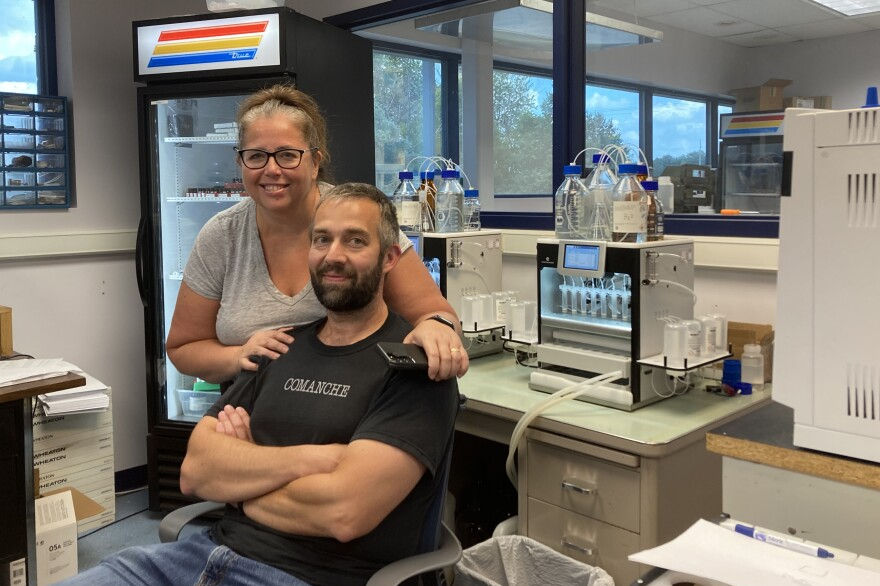What is PFAS?
Per- and polyfluoroalkyl substances (PFAS) are a group of synthetic chemicals that have been in used in firefighting foam, chrome-plating, waterproof textiles and other Teflon products. These chemicals are attracting particular attention due to their persistence in the environment and risk of adverse health impacts. Solid Phase Extraction (SPE) is commonly employed for extracting PFAS in drinking/surface/waste water samples as well as clean up of soil, food, solids and biosolid extracts. Common SPE methods for water samples include EPA Method 537.1, EPA Method 533, DoD QSM Table B-15, ISO 21675, EPA Method 1633 and other isotope dilution methods.
Below depicts the snapshot of PFAS pollution of water systems in USA as of August 2023. Data is collected by EWG and SSEHRI and shows 3,186 locations in 50 states with PFAS contamination. Our SPE-03 systems have been deployed in major locations, and continue to see new government and private labs take steps to streamline their PFAS testing.

PFAS Extraction Efforts
Challenges of Manual PFAS Extraction
PFAS compounds are highly ubiquitous, requiring careful handling to avoid cross-contamination. The extraction procedure also involves many steps, including sample container rinsing to recover sticker PFAS compounds. Combined with the need to prevent sorbent drying and maintain flow rates, a technician needs to fully attend to the extraction. A broad range of compounds with varying chain lengths and functional groups mean that more than one type of extraction needs to be performed to cover the growing PFAS list.
MANUAL EXTRACTION

-
Time consuming - constant supervision
-
Tedious - many steps in extraction procedure
-
Challenging - maintaining flow rates
-
Low throughput - 1 to 2 runs per shift
-
Human error
AUTOMATED SPE

-
Push start and walk away
-
All cartridge extraction steps automated
-
Constant flow rates, resistant to clogging
-
3 to 4 runs per shift (EPA Method 537.1)
-
Consistent results and extraction time
How SPE-03 Achieves Clean Background
Care must be taken with automated SPE systems to ensure that PTFE commonly used in these systems does not contribute to unacceptable analyte concentrations in the blanks. The system should also minimize carry over. With the following features, the SPE-03 is able to exceed even the tightest background limits.
1) Replace PTFE tubing in solvent and sample lines
2) Replace PTFE valve rotors
3) Optimize the flow path and remove dead zones during solvent cleaning
4) Devise a closed sample loading system to avoid contamination from the environment.
5) Design an effective and efficient cleaning method to be run between batches

Valve 1
No contact with samples.
Handles solvents, nitrogen & air
Valve 2
8 Channels, each with dedicated ports for sample, syringe pump and cartridge
1 of 8 Channels
Flow path of SPE-03 based on two valves
Since 2018, the SPE-03 was validated for background encompassing over 40 PFAS compounds. The following results were obtained from a customer lab running 8 blanks following EPA Method 537.1, concentrations are in [ng/L].

How SPE-03 Achieves Good PFAS Recovery
Controlled Flow Rates
The SPE-03 uses positive-pressure syringe pumps to deliver solvents and samples at set flow rates through the SPE cartridges. Not only does this approach prevent drying of sorbent material, it maintains uniform flow even when cartridges are clogged.

The MOD-004 configuration uses a strong jet of solvent to rinse sample bottles. Built-in resonators shake the bottles while rinsing to achieve maximum coverage. The shake feature also removes large water droplets from sample bottles after rinsing to reduce water content in the final elution.
SPE Cartridge Soaking
A time-based wait can be added to the extraction protocol for soaking SPE cartridges during pre-conditioning or elution. This has been suggested by EPA Method 537.1 to improve the recovery of PFBS and PFHxA.














